Before social media and smartphones kept teenagers connected virtually, shopping malls served as the ultimate offline social network—vibrant community hubs where friendships were formed, romances blossomed, and independence was practiced under the fluorescent glow of retail paradise. From the late 1970s through the early 2000s, malls weren’t just places to shop; they were cultural institutions that shaped a generation’s experiences and memories. Let’s take a nostalgic stroll through the quintessential mall hangouts that once drew teenagers like magnets every Friday night and Saturday afternoon.
1. The Food Court
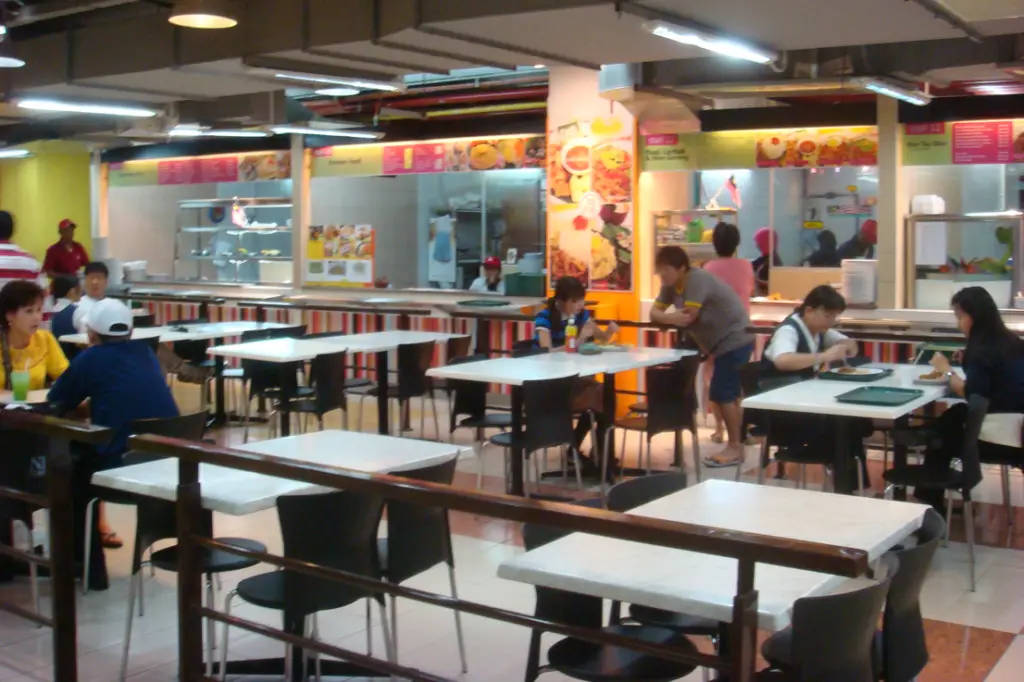
The bustling heart of any respectable mall, the food court was teenage social headquarters—a place to see and be seen while sharing a massive plate of cheese fries or a single soft pretzel among five friends. Groups would claim tables for hours, nursing watered-down sodas while engaging in the serious business of discussing school drama, weekend plans, and budding romances. The strategic positioning was crucial: tables with sight lines to the main entrance let you monitor who was arriving, while corner spots provided the privacy needed for heart-to-heart conversations. Mental Floss reveals that for how fun and nostalgic this feature was, it also boasts a equally fascinating hsitory.
Food courts offered the perfect economic democracy for teens with varying allowance situations—from those who could afford full meals at Panda Express or Sbarro to those nursing a single soft drink for hours. Many mall managers understood the food court’s social importance, generally tolerating teen gatherings as long as purchases were made and noise levels remained reasonable. For countless teens across America, “Meet me at the food court” were the magical words that launched countless weekend adventures.
2. The Arcade
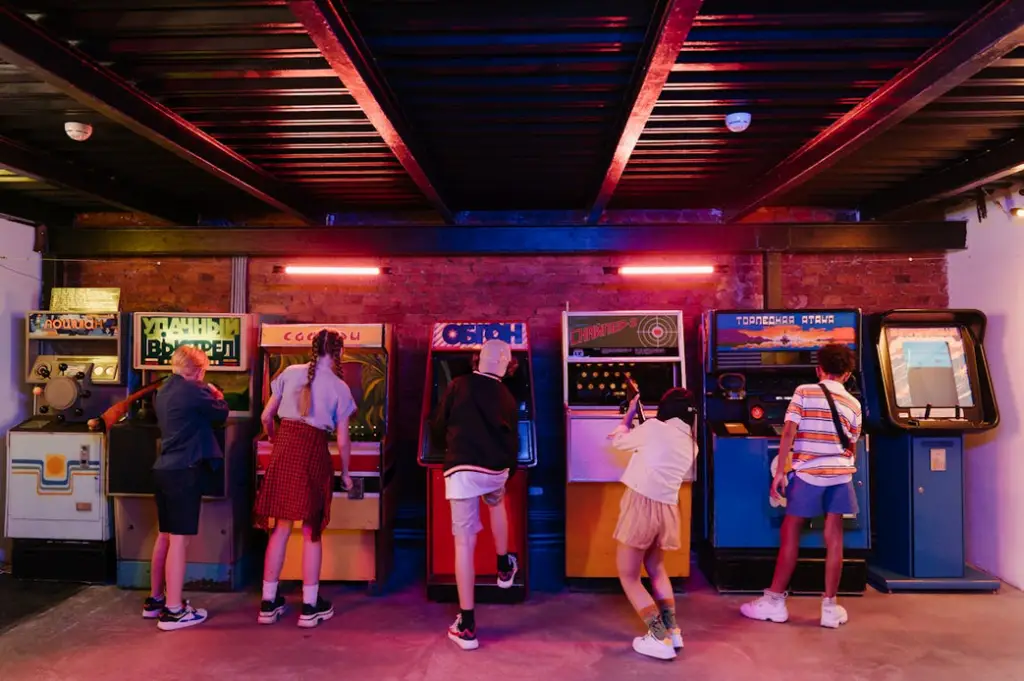
With their hypnotic cacophony of electronic beeps, flashing lights, and the satisfying clink of quarters, mall arcades like Aladdin’s Castle and Tilt created an irresistible teen magnet that smelled faintly of carpet cleaner and adolescent competitiveness. Expert players drew admiring crowds as they mastered Mortal Kombat or Street Fighter II, establishing mall-wide reputations and unofficial hierarchies based on gaming prowess. The arcade offered a rare space where social status could be earned through skill rather than popularity or fashion—where the school’s quietest kid might reign supreme at Dance Dance Revolution. ACMI further takes readers and gamers back to a time when the arcade shaped the video game scene.
For many teens, these dimly lit gaming havens represented the perfect transition zone between childhood play and teenage social life. Budding romances often developed over shared games of Skee-Ball or air hockey, while friendships were cemented through cooperative gameplay and the pooling of quarters for just one more round. By the late 1990s, many arcades had expanded to include redemption games and prize counters, where a Saturday’s worth of tickets might be redeemed for a coveted giant stuffed animal—the ultimate mall status symbol and testament to gaming dedication.
3. Spencer Gifts
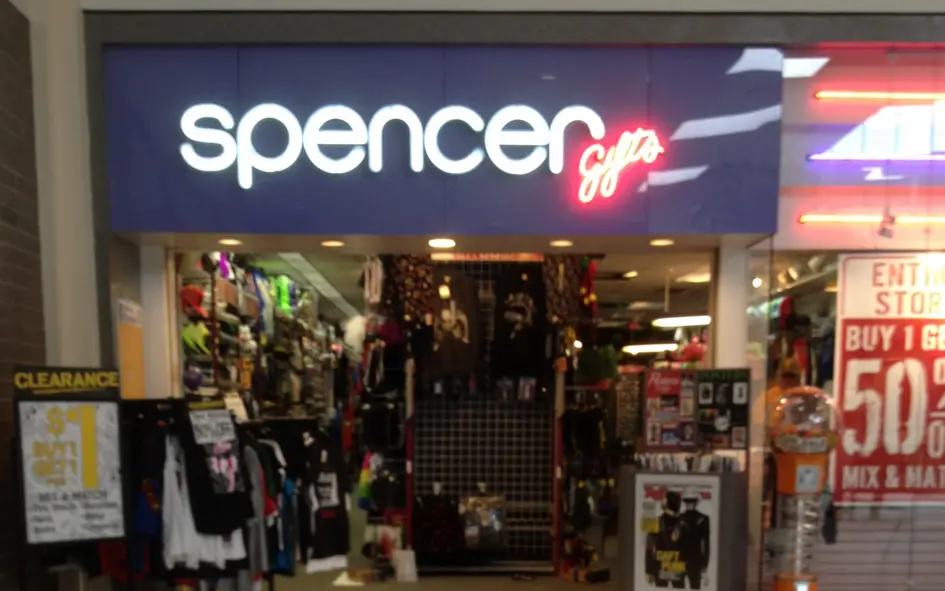
Equal parts gag shop, light-up gadget emporium, and forbidden teenage wonderland, Spencer Gifts occupied a unique position in mall culture as the place where teens could giggle over adult-oriented novelty items they were technically too young to purchase. The store’s strategic layout typically featured innocuous lava lamps and blacklight posters at the front, with increasingly risqué merchandise toward the back—creating an informal gradient of adolescent daring. Friends would dare each other to venture into “the back section” where suggestive greeting cards and gag gifts lived, testing the boundaries of comfort and coolness. According to Mental Floss, Spencer Gifts has a history that’s surprisingly unique among stores like it.
Beyond its more provocative offerings, Spencer’s provided crucial access to subcultural merchandise that helped teens establish identity—band t-shirts, punk accessories, and novelty items that signaled one’s humor and interests. The store’s tolerant staff generally allowed browsers as long as nothing was damaged, making it a perfect storm of mild rebellion, identity exploration, and consumption that epitomized the teenage mall experience. For many suburban teens with limited access to counterculture, Spencer’s novelty license plates, door beads, and body jewelry represented their first opportunity to express alternative identities.
4. The Record Store
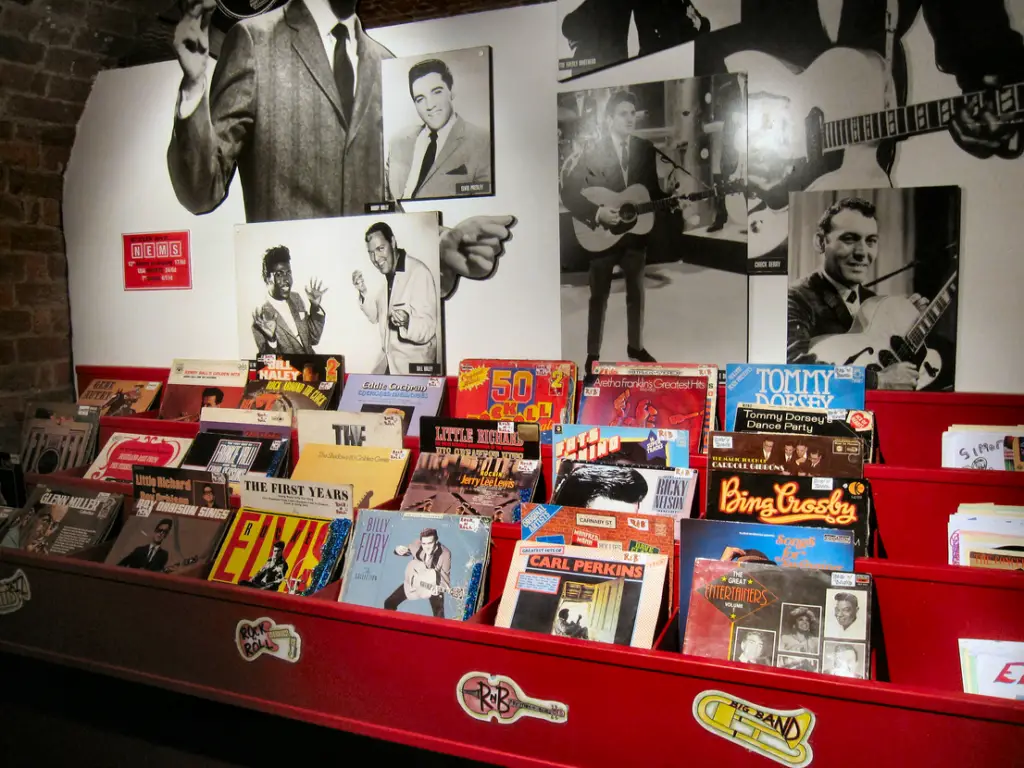
Before digital downloads rendered them nearly extinct, mall record stores like Sam Goody, Musicland, and Camelot Music served as temples of musical discovery where teens would spend hours flipping through CDs, analyzing album art, and forming opinions that would shape their identities. These stores were cultural nexuses where music-minded teens could find their tribes—whether headbangers congregating around the metal section or indie kids seeking import singles. The listening stations with their chunky headphones offered the thrill of discovery, introducing teens to artists they’d only read about in magazines.
Record stores weren’t just retail spaces but community forums where knowledgeable (and often intimidatingly cool) staff would recommend obscure albums and upcoming bands, serving as unofficial mentors in musical taste development. Album release days would draw crowds of eager teens pooling their allowance money for the latest Green Day or TLC album, while band appearances and signings could create lines that snaked through the mall corridors. In the pre-internet era, record store bulletin boards functioned as analog social media, advertising local shows, musician wanted ads, and used equipment sales—connecting suburban teens to wider musical communities.
5. The Movie Theater

The mall multiplex represented weekend evening headquarters for teenage social life, where the ritual of deciding what to see was often as important as the film itself. Groups would gather in the lobby studying showtimes, negotiating between different film preferences, and strategizing how to get multiple friends into R-rated features with a single 18-year-old’s ID. The theater offered a legitimate reason for parents to drop off teens for hours of supervised independence, making it the perfect staging ground for an evening’s adventures.
Beyond the films themselves, theater lobbies and adjacent areas functioned as crucial meeting points and social showcases. The arcade areas attached to many mall theaters provided entertainment during the wait for showtime, while concession stands witnessed elaborate financial negotiations as teens pooled limited funds for overpriced popcorn and Junior Mints. For many teenagers, the darkened theater represented an early venue for romance—nervous hand-holding, the casual arm-over-shoulder move, and first kisses that smelled like butter substitute and Milk Duds—all while developing the cultural literacy that would fuel Monday’s school conversations.
6. The Orange Julius/Smoothie Stand

These brightly colored kiosks offering frothy, fruit-flavored concoctions occupied a special place in mall culture—affordable enough for teen budgets while feeling slightly more sophisticated than typical fast food. The signature Orange Julius with its frothy, creamsicle-like flavor became a mall status symbol clutched in the hands of teens parading through the concourse. Unlike the commitment of food court dining, these stands offered grab-and-go refreshment that could fuel hours of mall wandering.
The typical location of these stands—often at major intersections of mall corridors—made them natural meeting points and people-watching stations. Groups would gather around the high tables or ledges nearby, sipping their drinks while scoping out classmates and crushes passing by. The relatively healthy image of fruit smoothies also provided cover with parents who might otherwise object to hours of junk food consumption, making “getting a smoothie” the perfect excuse for an extended mall session that involved considerably more socializing than actual smoothie drinking.
7. Hot Topic
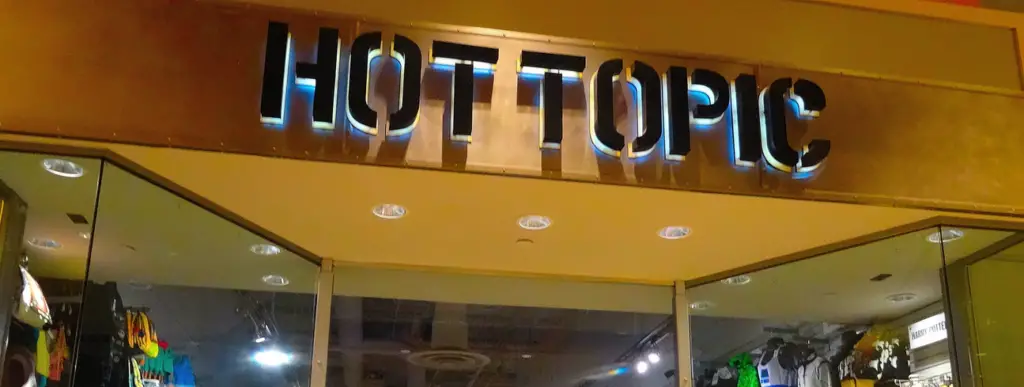
Arriving in malls during the 1990s, Hot Topic quickly established itself as headquarters for alternative teen culture, offering band merchandise, gothic accessories, and pop-culture items that couldn’t be found in conventional department stores. With its black walls, pulsing alternative music, and staff sporting vibrant hair colors and multiple piercings, the store created a distinct atmosphere that simultaneously attracted alternative teens and scandalized their parents. For suburban youth with limited access to urban counterculture, Hot Topic provided crucial identity resources—whether Cure t-shirts, wallet chains, or the perfect studded choker.
The store brilliantly straddled the line between authentic subcultural merchandise and accessible mall retailer, allowing teens to experiment with alternative identities without fully committing to underground scenes. Its strategic merchandise mix evolved with youth subcultures—from grunge to nu-metal to emo—ensuring each new wave of teenagers found representation on its crowded racks. For many teens, simply entering Hot Topic felt like a mild act of rebellion, and the store’s playlist often provided introduction to bands that would become obsessions, making it as much a cultural education space as a retail outlet.
8. The Fountain
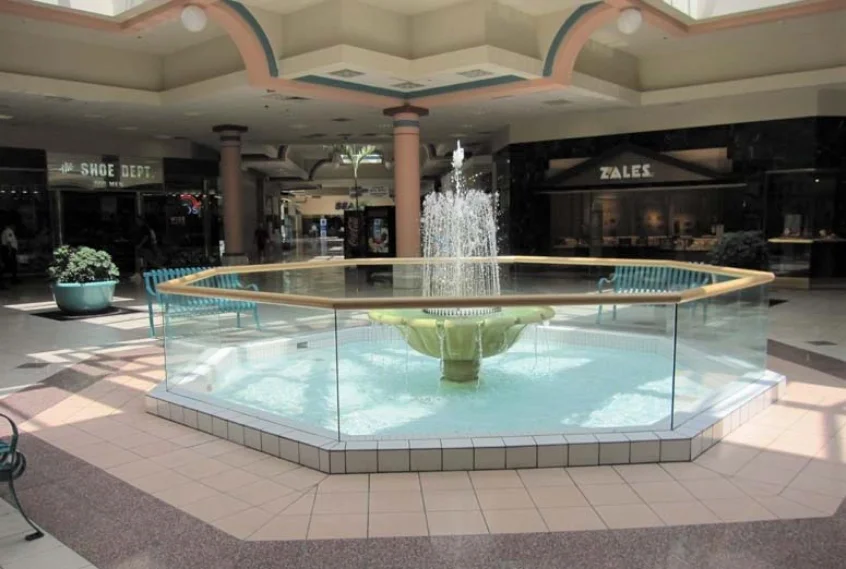
These architectural centerpieces became natural gathering points in malls across America, offering seating, people-watching opportunities, and the perpetual background music of splashing water. Mall fountains established themselves as crucial infrastructure for teen social life—a place to wait for friends, process dramatic events, or gather courage before approaching a crush. The ritual of tossing coins and making wishes provided a thin veneer of activity that could justify occupying prime fountain real estate for extended periods.
The fountain’s status as both central landmark and neutral territory made it ideal for social coordination in the pre-cell phone era. “Meet me at the fountain” became universal mall language, requiring no further specification even in sprawling shopping centers. The surrounding seating areas witnessed countless teenage milestones—breakups, makeups, gossip exchanges, and the formation of friendships and rivalries that would define school social landscapes. For mall security guards, the fountain represented a predictable teen congregation point requiring regular monitoring, creating an ongoing cat-and-mouse game as groups dispersed and reformed throughout Saturday afternoons.
9. The Department Store Makeup Counter
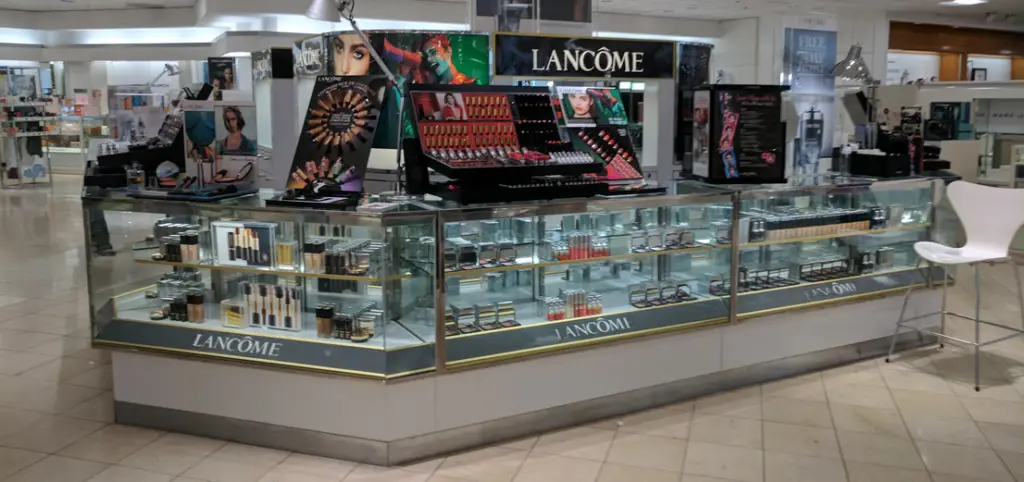
For teenage girls especially, department store makeup counters offered a glamorous laboratory for identity experimentation, where sophisticated beauty advisors would demonstrate techniques and products normally beyond adolescent budgets. Groups would gather for impromptu makeovers, testing lipstick shades on hand, spritzing perfume samples, and mastering the art of obtaining maximum free samples with minimum purchase obligation. The counters served as informal beauty schools where teens could gather insider knowledge to share with friends who waited their turn.
The makeup counter experience represented a performance of approaching adulthood—trying on more sophisticated identities under the guidance of professional adults who weren’t parents or teachers. Stores like Clinique, Estee Lauder, and MAC offered different price points and aesthetic identities, allowing teens to align themselves with beauty tribes that matched their emerging personal style and budget. The tiny sample containers and perfume testing strips became coveted status items, carried in purses and backpacks as evidence of beauty exploration and sophistication that extended the mall experience into school hallways the following Monday.
10. Waldenbooks/B. Dalton
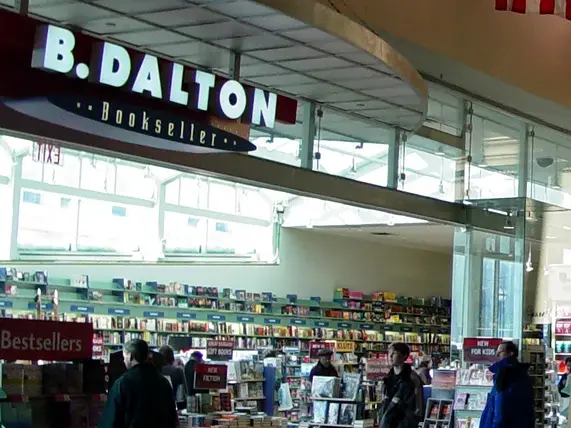
Before massive bookstore chains and online retailers dominated the market, mall bookstores like Waldenbooks and B. Dalton provided literary teens with cozy hideaways amidst the retail chaos. These stores combined the intellectual legitimacy parents approved of with the social possibilities of mall culture, making them perfect alibis for extended mall visits. The magazine sections proved particularly popular, allowing teens to browse publications covering their interests—from Seventeen and YM to Guitar World and Thrasher—without committing to purchases.
The stores’ small footprint and packed shelves created intimate spaces where bookish teens could find community among the paperbacks. Fantasy and science fiction sections fostered particular camaraderie, with recommendations exchanged between strangers united by their interest in dragons or spaceships. For many teens in pre-internet times, these shops provided crucial access to subcultures and information unavailable in school libraries—whether LGBTQ-themed fiction discretely discovered on back shelves or underground music magazines covering scenes absent from local radio. The staff often included older teens and college students who served as cultural guides, recommending books that would expand horizons beyond assigned school reading.
11. The Photo Booth
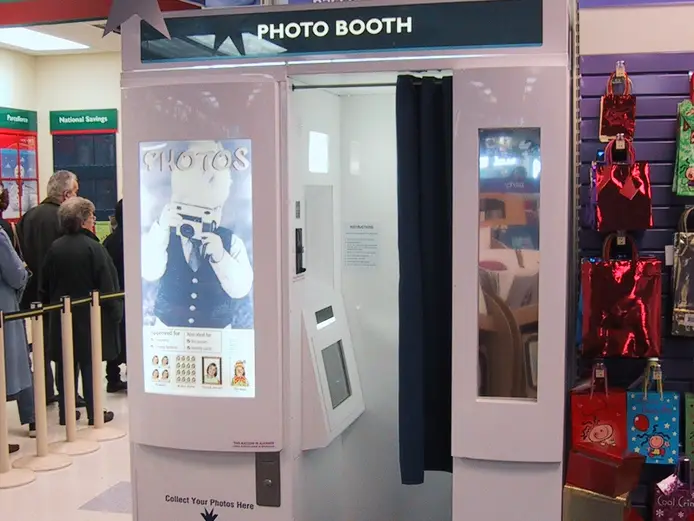
Tucked into corners near arcades or movie theaters, photo booths offered privacy, entertainment, and tangible mementos of mall adventures all in one compact experience. Long before selfies dominated social media, these mechanical photographers captured teenage friendships, romantic couples, and solo glamour shots in strips of four images that became treasured keepsakes tucked into wallets and locker doors. The confined space necessitated physical closeness, creating perfect excuses for friends to squeeze together or couples to share intimate moments.
The photo booth’s brief countdown between shots inspired improvisation and escalating silliness, documenting the unfiltered joy of teenage friendships in an era before digital editing and careful curation. The anticipation while waiting for the strip to develop added drama to the experience, with groups huddled around the delivery slot awaiting their images. Photo booths witnessed countless first dates, best friend rituals, and the documentation of evolving fashion choices and hairstyles throughout adolescence. The resulting photo strips became physical social media of sorts—shared, displayed, and eventually collected in shoeboxes as artifacts of youth that many now treasure as adults.
12. The Store That Was Too Expensive to Actually Shop At
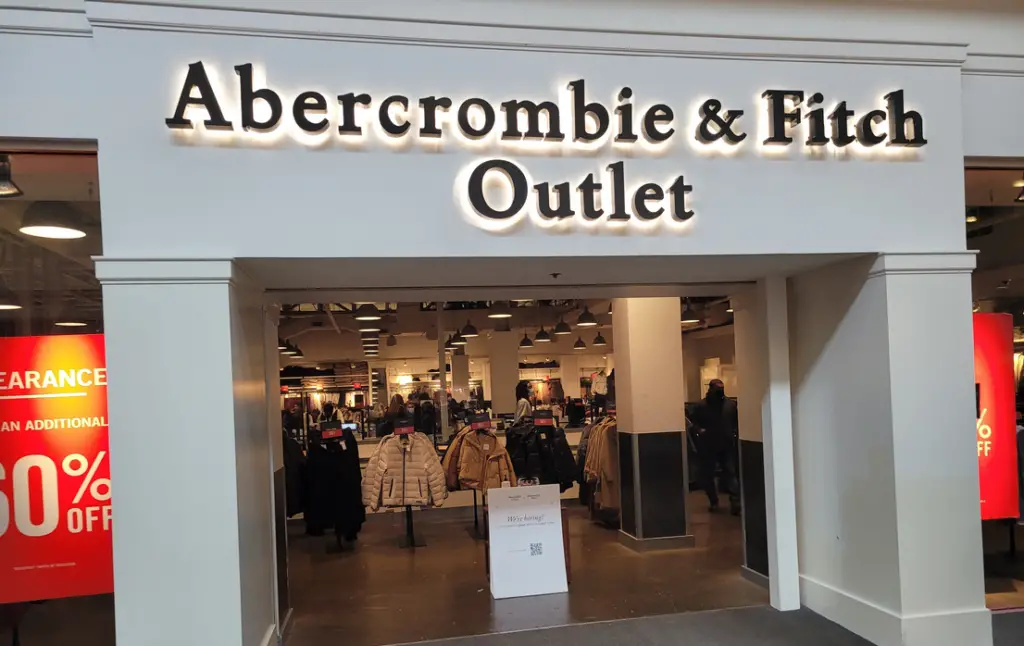
Every mall had at least one retailer where teens would browse aspirationally—touching luxurious fabrics, checking price tags, and occasionally mustering courage to try on items they had no intention of purchasing. Stores like Abercrombie & Fitch, Bebe, or Sharper Image occupied this space in the teen mall ecosystem, representing aspirational consumption and sophisticated tastes beyond typical adolescent budgets. These shops were theaters of pretend adulthood, where teens could temporarily inhabit more affluent identities through the simple act of browsing.
Store employees generally fell into two categories—those who welcomed teen browsers as future customers and those who made their disdain for non-purchasing visitors abundantly clear through pointed questions and hovering surveillance. Navigation of these social dynamics became part of mall literacy, with teens developing radar for which luxury stores had tolerant staff during which shifts. For many adolescents, these shops provided first encounters with class consciousness and economic stratification, as well as motivation for after-school jobs and saving strategies. The rare actual purchase from these stores became legendary among friend groups—whether a single bottle of expensive cologne rationed for special occasions or designer jeans from a miraculous clearance rack that would be worn until they disintegrated.
The mall wasn’t just a collection of stores but a carefully designed ecosystem where teenagers could practice independence, develop social skills, and construct identities through consumption and community. As online shopping and smartphone communication have transformed youth culture, these physical gathering spaces have largely disappeared, taking with them the shared experiences that once united teenage generations across geographic and socioeconomic lines. While today’s teens connect through digital platforms, those who came of age in the mall era retain vivid memories of Orange Julius sweetness, arcade noise, and the unique freedom found wandering under those skylights with friends and a few crumpled dollars in their pockets.


